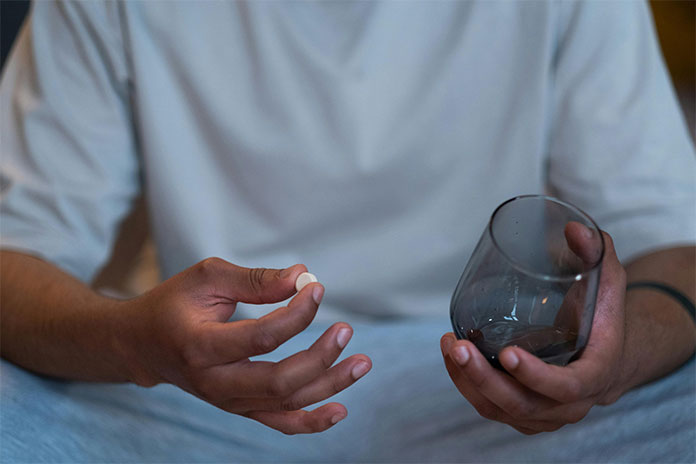Table of Contents
The Ideal Supplementation Protocol
To get the most out of NAC supplementation, taking an adequate dosage and distributing daily intake is necessary.
Take A Sufficient Dose
When consumed orally, NAC is rapidly absorbed in the intestine and then metabolized by the liver. It is mainly transformed into L-cysteine, which will allow glutathione production. Its maximum blood concentration is reached 1 to 2 hours after ingestion. Its bioavailability is low, estimated between 6 and 10%, which means that only a tiny proportion of the NAC ingested is available to the body.
Increased Bioavailability With Increasing Doses
However, a study has shown that it is possible to increase the bioavailability of NAC by using a sufficient dose. It was carried out on 10 healthy volunteers who received 200, 600, and 1200 mg of NAC on different occasions. The evolution of blood concentration was carefully monitored.
The analyses from these data made it possible to determine that the bioavailability is 7.6% with the 200mg dose, 8.3% with 600mg, and 11.6% with 1200mg. The maximum blood concentration increases with increasing doses, from 1.64 to 2.67 and 2.99μmol/L, respectively.
The Impact Of Dose In The Treatment Of COPD
The effectiveness of NAC, depending on the dose administered, has also been observed in people going through an episode of exacerbation of COPD, a lung condition mainly affecting smokers. As part of a study involving 123 participants, different groups were formed: one received a dose of 600 mg per day of NAC and another 1200 mg, while the last group was treated with a placebo, in more than the usual management of the disease.
For people with an abnormally high value of C-reactive protein, a sign of intense inflammatory phenomena in the body, the situation returned to normal in 90% of cases with the highest dose, compared to 52% with the lowest dose and 19% with the placebo. In addition, only the 1200 mg dose lowered the level of interleukin-8, another marker of inflammation. Regarding symptoms, this high dose significantly reduced expectancy difficulties compared to the lowest dose.
Also Read: Does Sport Need Food Supplements?
Split Daily Dose
When we consume NAC, it only stays in the body for a short time. Its half-life is approximately 6 hours, which means that in this time, half of the substance has been metabolized or eliminated by the body. This characteristic requires regular administration to maintain adequate levels in the body and enjoy its optimal effects. Therefore, dividing the daily dose into several doses spread throughout the day is preferable. Clinical trials evaluating the effectiveness of NAC in different contexts generally include this feature.
For example, in a study of men using cocaine, NAC was administered at a daily dose of 2400 mg, divided into two doses. In people suffering from pulmonary fibrosis, the daily dose of 1800 mg was administered thrice. The same was true for patients with cystic fibrosis, who received 900 mg of NAC three times a day.
Avoid Continuous Intake Over The Week
In a work published in 2023 evaluating the benefit of NAC for women with endometriosis, a sometimes debilitating gynecological disorder, researchers opted for an unusual supplementation regimen. To prevent NAC from losing effectiveness with prolonged daily use, they suggested that participants take 3 doses of 600 mg of NAC daily, but only three days per week, over three months.
The results obtained, particularly positive, made it possible to validate the approach: the intensity of the symptoms (pain during periods, sexual intercourse, and chronic pelvic pain) and the size of the lesions decreased, making it possible to limit the use of anti-inflammatory drugs. -inflammatory. Among the 52 participants who wanted children, 39 were able to make their plans a reality within 6 months after the start of treatment.
Gradually Increase The Daily Dose
A relevant approach to optimize N-acetylcysteine supplementation is to initiate treatment with a moderate daily dose and then gradually increase it afterward. This strategy was implemented as part of a clinical trial among adolescents with gambling addiction. Participants started with a dose of 600mg per day for two weeks, then increased to 1200 mg per day for two other weeks, finally reaching 1800 mg/day for the remaining 4 weeks of the study.
However, increasing the dose was not systematic if good results were already observed. A gradual progression of this type makes it easier to determine the optimal amount to receive for each person. It corresponds to the point of balance between perceived effectiveness and good tolerance. Indeed, adverse digestive effects (nausea, flatulence, diarrhea, etc.) can sometimes occur depending on individual sensitivities.
Associations To Favor Or Avoid
The effects of NAC can be optimized or, on the contrary, reduced depending on the nature of the compounds with which it is consumed.
The Essential NAC-Glycine Duo
In addition to cysteine, glutathione comprises two other amino acids, glycine, and glutamic acid. Its synthesis takes place in two stages. In the first, cysteine is added to glutamic acid to form an intermediate, glutamylcysteine. Secondly, glycine is added to glutamylcysteine to form γ‐glutamyl‐cysteinyl glycine or glutathione.
While the availability of glutamic acid is generally not a problem, the same is not valid for glycine. This amino acid is rare in the diet. Consequently, the co-administration of NAC as a source of cysteine and glycine represents an exciting option to strengthen the body’s antioxidant capacities. This aspect is particularly crucial during aging.
Compensate For The Age-Related Drop In Glutathione
A study has shown that older people have a lower glutathione concentration than young adults, reduced by 76%. A 24-week supplementation with glycine and NAC made it possible to correct this deficiency, increasing it by 200% in the red blood cells of seniors. The intervention also improved numerous biological parameters (mitochondrial and endothelial function, inflammation, insulin resistance, genomic damage, etc.).
It positively impacted the participants’ overall health, cognition, strength, walking speed, and exercise capacity. Additionally, a reduction in body fat and waist circumference was noted during this period. When supplementation stopped, the benefits faded.
These anti-aging promises were confirmed in a study in mice. Supplementation with glycine and NAC increased the longevity of treated animals by 24% compared to their peers. The combination of these two compounds has also provided benefits in the context of chronic diseases such as HIV or type 2 diabetes.
Other Favorable Associations
Additive or synergistic effects have been observed between NAC and several natural compounds. For example, the combination of NAC and epigallocatechin gallate (EGCG), a green tea catechin, promotes the destruction of lung cancer cells . The two molecules combine to form a compound with powerful anti-cancer effects.
Also Read: Addiction, This Addiction So Seriously Harmful To Health


